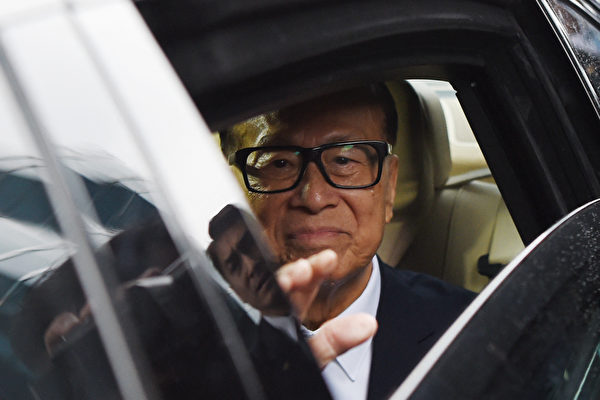Hong Kong’s richest man Li Ka-shing continues to sell off assets in mainland China and Hong Kong on a large scale, opting instead to heavily invest in energy, infrastructure, and public utilities in Europe, sparking widespread attention. An article in “Window of the South” magazine on August 13th expressed that “Li Ka-shing has sensed danger this time” and is accelerating the clearance of assets in China.
Each time Li Ka-shing sells off assets in China, it triggers polarized discussions. Some believe it is merely a regular business decision, based on his predictions and judgment of the market environment. However, many more people are worried, seeing his actions as sending an unusual signal, with significant underlying uncertainty.
To understand why Li Ka-shing is rushing to “exit,” one must first look back at his successful model in mainland China: acquiring land at low prices and holding onto it for the long term.
One of the most sensational cases is the “Nancheng Duhui” project in Chengdu. In 2004, Li Ka-shing bought the land in the Chengdu Hi-Tech Zone for 2.1 billion RMB. Instead of starting construction in the following two years, he mortgaged some of the land to banks to obtain loans. He divided the land into eight phases of development, only completing the sixth phase after 12 years.
In 2020, Li Ka-shing sold the remaining shares for the 7th and 8th phases to other companies, earning 3.8 billion HKD from that transaction alone. That year, Li Ka-shing’s side suddenly began to retreat. According to the announcement by Cheung Kong Property Holdings at the time, in July of that year, Nancheng Duhui was transferred to RZ3262019 Limited registered in the British Virgin Islands, with Yuexiu Group and Chengdu Ruizhuo Property Co. each holding a 50% stake.
Li Ka-shing successfully replicated this model of “buying land at ultra-low prices, holding onto it for over a decade, and developing slowly based on market fluctuations” in many cities like Beijing, Dongguan, Shanghai, and Wuhan, reaping substantial returns.
However, Li Ka-shing’s behavior has fundamentally changed. In the past, he was always able to buy land during the real estate downturn and cash out at market peaks. Now, during a general real estate slump, he is selling off assets at “breakneck prices,” leading people to speculate whether he is hastening to pull funds out to shift to other areas or even preparing for a complete exit.
Li Ka-shing’s “fire sale” of assets has been accelerating in recent years. At the end of July this year, Cheung Kong Group sold 400 properties in the Greater Bay Area (Huizhou, Zhongshan, Dongguan, Guangzhou) at “cutthroat prices,” with the lowest total price only 400,000 RMB. In early August, some intermediaries indicated that many people from Hong Kong are rushing to purchase, with only a few properties left.
Behind Li Ka-shing’s urgent asset sales for cashing in during the real estate market downturn is a reflection of significant changes in the Chinese market environment: increasing policy risks and challenges for the macroeconomy and private enterprises.
Reportedly, since 2015, China has been continuously tightening supervision of the real estate market, especially implementing a series of measures targeting behaviors like land hoarding and holding onto properties. This directly impacts Li Ka-shing’s previously successful business strategy, making it challenging to sustain his high-profit model.
Li Ka-shing appears to sense that the risks in the Chinese market are escalating, hence shifting his assets to more stable overseas markets to ensure the long-term security of his business empire.

